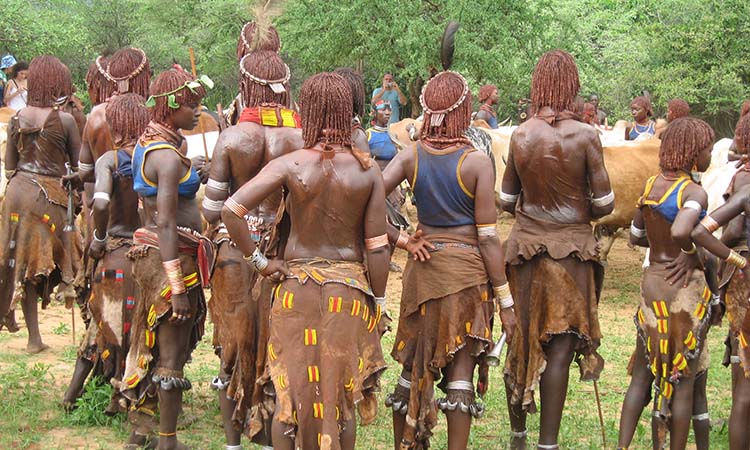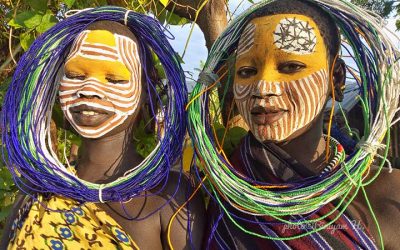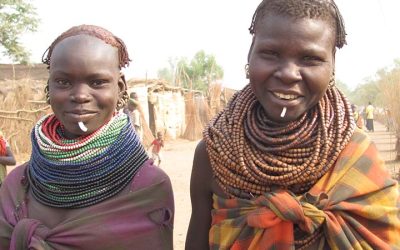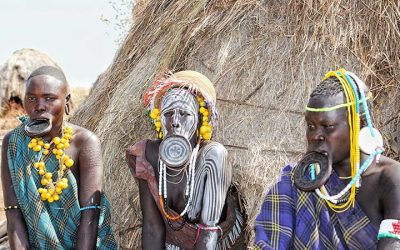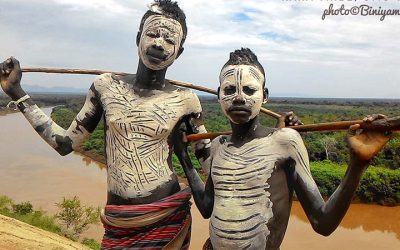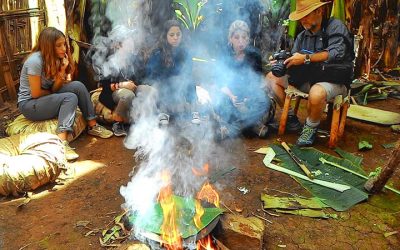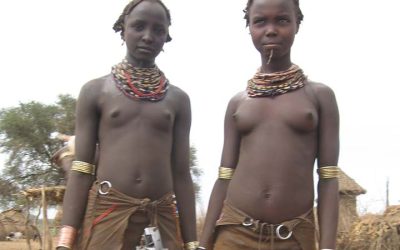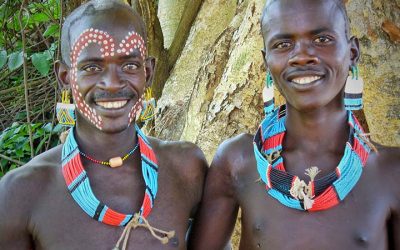Hamar Tribe
But scarification is only one aspect of Hamar adornment. After all, the Hamar people are considered to be “masters” of body decoration and it would be an understatement to say that most Hamar men and women share a fundamental belief in physical perfection.
Hair grooming is paramount to Hamar concepts of beauty. Women roll their locks with fat and red ochre (assile) and then twist them into crimson-colored dreds called goscha, a style that men find attractive. There is a ritual word in Hamar called dansho which evokes abundance and overflowing growth of the fields, and some say dansho is also like the red buttery ringlets of a young woman’s hair because they evoke a similar meaning. On the other hand, courageous men that have killed an enemy or dangerous animal wear a style of mud cap that lasts from three to six months.
The hair is teased, then flattened with mud and water and painted with red ochre and lime. Goat vertebrae are added to the back or front of the bun so that one or more white ostrich feathers (tuti) can be attached to it; these feathers are symbols of hunting and the domain of nature. To protect their prized hairdos, Hamar men at all times carry with them a borkoto or carved stool which they use as a headrest.
Married and engaged women wear two heavy iron rings around their necks called esente, but if they are the first wife of a man an additional torque with a phallic protrusion known as a binyere is worn. Women also decorate themselves with cowrie shells, glass, seed and metal beads, and wear beaded goat skin frocks that cover their upper body. Elder women adorn themselves with thick iron rings (zau) stacked on their arms and legs. Traditionally, arm rings could only be purchased with cattle (twenty-five rings for one cow). Among the neighboring Banna, a woman may wear over one-hundred pounds of steel rings on her body. If she dies before her husband the rings are cut off, but if this proves too difficult her feet, head, or hands are sometimes severed from her corpse because the rings are the property of her husband and are given to his next wife.

